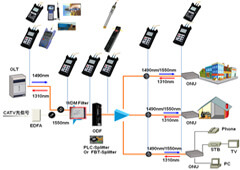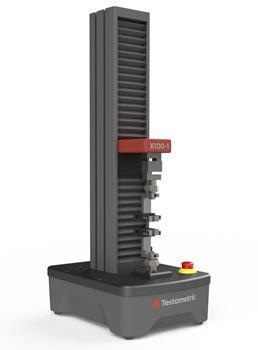Maximize your production yield with high-precision optical measurement system
Wiki Article
A Comprehensive Overview to Optical Measurement System for Fiber Analysis
When it concerns fiber evaluation, understanding optical measurement systems is essential for evaluating performance and making certain quality. You'll check out crucial techniques like interferometry and spectroscopy, which assist you gauge key specifications. Yet there's even more to it than just these techniques; grasping depletion dimension strategies can significantly affect your network's performance. As you browse through this guide, you'll uncover insights that could transform your method to fiber optics.Comprehending Optical Measurement Solutions
When you check out optical dimension systems, you'll find they're necessary for assessing fibers with accuracy. These systems make use of light to analyze numerous features of fibers, consisting of size, refractive index, and harmony. By utilizing strategies like interferometry and spectroscopy, you can get useful understandings into the fiber's properties.You'll discover that these systems are developed to reduce errors and boost precision, making certain trusted information for your evaluation. Different configurations, such as single-mode and multi-mode systems, deal with specific fiber kinds, permitting you to select the finest fit for your needs.Moreover, the integration of innovative software program tools helps you interpret the information effectively, making it simpler to identify any kind of variances or problems. As you examine deeper right into these measurement systems, you'll value exactly how they improve the logical procedure and improve the general top quality of fiber manufacturing and screening.Secret Parameters for Fiber Analysis
Secret parameters for fiber analysis play an essential duty in figuring out the quality and efficiency of optical fibers. When you review a fiber, you'll wish to concentrate on qualities such as attenuation, transmission capacity, and modal dispersion. Attenuation determines the loss of signal stamina as light trips with the fiber. A reduced attenuation worth indicates far better quality and longer transmission distances - fiber measurement.Bandwidth describes the data-carrying ability of the fiber and is crucial for high-speed interaction. You'll need to examine the bandwidth to ensure it fulfills your application requirements. Modal diffusion, which arises from the different rates at which light trips through different settings in multimode fibers, affects signal clearnessStrategies for Attenuation Measurement

Transmission capacity and Its Effect On Efficiency
Understanding bandwidth is important for maximizing fiber efficiency, as it directly affects the amount of information that can be transmitted over a network. Higher transmission capacity implies you can send out more details concurrently, permitting faster interaction and better general performance. When you're collaborating with fiber optics, it's important to consider exactly how transmission capacity communicates with fiber attributes, such as core size and material properties.If the transmission capacity is limited, you might experience information loss or slower speeds, affecting your applications. Additionally, different kinds of fibers can support varying data transfer degrees, so it is very important to pick the right fiber for your particular needs.You need to also bear in mind that ecological variables, like temperature and outside disturbance, can influence bandwidth. By comprehending these elements, you can make enlightened choices to enhance your fiber optic systems, guaranteeing reliable and efficient data transmission.Refractive Index Measurement Techniques

Overall Internal Representation
Overall internal representation (TIR) acts as a fundamental concept for determining the refractive index of fibers. When light travels from a denser tool to a less thick one, it can only be totally shown if the angle of incidence goes beyond a particular limit, called the crucial angle. This sensation enables you to establish the refractive index by examining the angles at which light reflects or refracts. By utilizing a setup that routes light into a fiber and gauges the resulting angles, you can determine the refractive index properly. Comprehending TIR not just enhances your fiber evaluation but additionally improves the style and efficiency of optical systems. So, leveraging TIR can cause extra efficient fiber-based applications.Interferometric Strategies
Structure on the principles of total interior representation, interferometric strategies provide a powerful means for determining the refractive index of fibers with high accuracy. These approaches manipulate the interference patterns created when beams Look At This split and recombine after traveling different courses. You can make use of setups like the Michelson or Mach-Zehnder interferometer to assess phase changes brought on by changes in refractive index. By very carefully calibrating your system and evaluating the resulting fringes, you can determine the refractive index with amazing precision. It's crucial to preserve steady environmental problems to decrease mistakes. With these strategies, you'll boost your understanding of fiber residential or commercial properties, resulting in better performance in various applications, from telecoms to sensing unit modern technology.Modal Diffusion and Its Relevance
Modal dispersion refers to the dispersing of light pulses as they take a trip with a fiber, which can affect the overall efficiency of the system. You'll see that this sensation can cause indicate distortion, affecting data transmission prices and high quality. Comprehending its significance is essential for maximizing fiber optic layouts.Meaning of Modal Dispersion
In optical fiber interactions, modal dispersion plays a significant duty in establishing signal high quality and transmission speed. It takes place when different light modes take a trip at varying rates with the fiber. Because each setting has unique paths and features, they can get to the receiving end at various times. This time around distinction can cause signal dispersing and distortion, which can deteriorate the total performance of the interaction system. You may encounter modal diffusion mainly in multimode fibers, where the numerous paths of light exacerbate the concern. Understanding modal diffusion is vital for maximizing fiber styles and ensuring that your interaction systems operate effectively, maintaining the stability of the transmitted signals over longer ranges.Effects on Fiber Efficiency
Understanding modal dispersion aids highlight its effects on fiber efficiency. This phenomenon happens when various settings of light traveling at varying speeds within the fiber, bring about signal spreading with time. As you analyze optical fibers, you'll see that enhanced modal diffusion can greatly deteriorate signal top quality, resulting in decreased transmission capacity and longer transmission distances. In useful terms, this indicates your information can arrive distorted or delayed, affecting total interaction efficiency. To reduce these impacts, you may take into consideration making use of single-mode fibers, which minimize modal dispersion. By selecting the best fiber type and comprehending just how modal diffusion influences efficiency, you can enhance transmission quality and guarantee dependable information transfer in your optical measurement systems.Tools and Technologies for Optical Measurements
When it comes to optical measurements, a number of innovative devices and technologies are at your disposal to improve fiber evaluation. You'll discover fiber optic testers, which examine signal high quality and performance, vital for keeping ideal network performance. Optical time-domain reflectometers (OTDRs) are vital for situating mistakes and measuring loss over distances, giving detailed insights right into fiber honesty. Additionally, spectrometers can assess light spectra, aiding you recognize product residential or commercial properties and composition.Don' t forget the importance of imaging systems, like digital microscopes, that allow you to aesthetically check fiber surfaces for issues. Likewise, think about using polarization analyzers to determine stress and strain in fibers, which is important for comprehending their behavior under numerous conditions. By leveraging these devices and innovations, you can greatly boost your fiber evaluation procedures, ensuring reliability and high efficiency in your optical networks.Frequently Asked Inquiries
What Are the Prices Associated With Optical Measurement Equipments?
The costs connected with optical measurement systems can vary greatly. You'll need to assess devices prices, upkeep costs, software licenses, and find more information possible training costs. Budgeting very carefully will assist you avoid unforeseen financial challenges down the line.
How Usually Should Fiber Analysis Be Performed?
You should carry out fiber analysis on a regular basis, normally every 6 months or after significant changes in the environment (optical measurement system). This ensures suitable efficiency and helps recognize prospective problems prior to they affect your system's efficiency and reliabilityCan Optical Measurement Equipments Be Adjusted in the house?
visit this site right hereYes, you can adjust optical measurement systems in your home, however it needs precision. Make sure you follow the maker's standards, utilize suitable calibration criteria, and confirm your results to guarantee precision in your dimensions.
What Industries Generally Use Optical Measurement Solutions?
You'll find optical measurement systems commonly made use of in markets like telecoms, manufacturing, health care, and research. They're essential for quality assurance, fiber evaluation, and guaranteeing specific measurements in various applications, boosting effectiveness and accuracy throughout industries.Are There Any Type Of Safety Interest In Optical Measurement Systems?
Yes, there are safety worry about optical measurement systems. You ought to constantly put on protective eyeglasses to shield your eyes from intense light resources and assurance correct training to manage tools safely and stay clear of mishaps.Report this wiki page